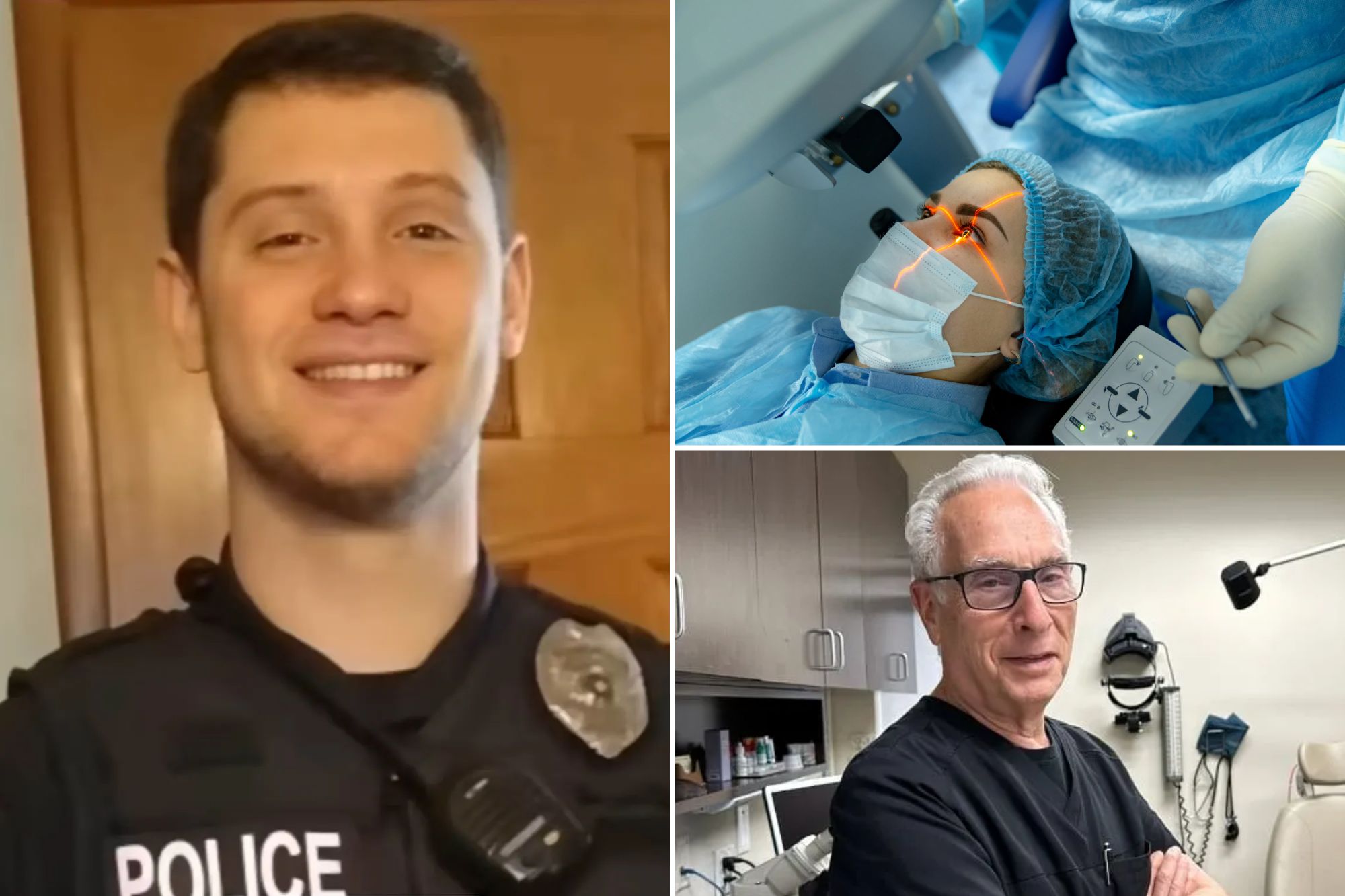The suicide of a 26 -year -old Pennsylvania police officer on the subsequent effects of the popular eye surgery that Lasik was not an isolated incident, and others said that the procedure left them agonizing and changing symptoms of life, patients and doctors told The Post.
Lasik providers say the procedure is 95% to 99%, but a Lasik survivor said he had suicide ideas for two years after his “disastrous” surgery in 2000.
He also claimed to know at least 40 people who took their own lives because they could not have constant pain and vision problems, who developed after the procedure.
“I really didn’t want to stay -at times, but I decided that I would give me the word about how dangerous this surgery may be,” The Post Wednesday Paula Cook, 66, of Tampa, FLA.
“Lasik lobby and surgeons will tell you that only 1 percent of patients have problems later. This is not true. There are several studies that indicate otherwise.
“The percentage of poor results is in the two digits, not 1 percent. And they know it,” he said.
Since Lasik was approved by the Food and Drug Administration in 1999, more than 10 million people in the United States have been subjected to laser vision correction, according to the medical journal Ophtalmology, which states that between 700,000 and 800,000 people have been registered each year.
COF manages the Lasik Complication Support Group on Facebook, one of the numerous social media organizations that have emerged in response to Lasik procedures.
“If you understand Lasik and what it does in the eyes and the cornea, you realize that you cannot do it in a healthy eye and do not expect complications,” said COF.
The procedure: acronym means “laser assisted keratomileusis” -Remodela the cornea of the eye.
“Not everyone has serious complications, but many more people suffer from what you know. I have floats, severe dry eyes, induced astigmatism and night vision problems,” said COF.
Ryan Kingerski – The police officer who died from suicide after taking time from Penn Hills Police Department in Allegheny County, Pa., Last August to undergo Lasik – had similar symptoms.
His bad parents, Tim and Stefanie Kingererski, told CBS News this week about hell that his son passed after the procedure.
Kingerskis said that Ryan began to suffer, dual vision, to see dark and float spots: tiny spots that appear as stripes or shapes similar to the roof through a person’s field of view.
Ryan’s parents told a story similar to that of Detroit’s television meteorologist, Jessica Starr, Dan Rose, who said he took his own life after fighting with intense eye pain and vision problems after laser surgery.
The 35 -year -old mother hung on December 12, 2018, only two months after submitting to Lasik to correct her vision.
“Before the procedure, Jessica was completely normal, very healthy,” Rose told WJBK in 2019. “There was no depression … no underlying problem.”
Rose said that his wife left behind a 30 -page and videos suicide note, which made it clear that the decision to end his life was due to elective surgery.
Morris Waxler, now 89, was an FDA consultant who directed the branch responsible for reviewing the data on LASIK between 1996 and 2000, which covers the period that was approved.
It is a decision that he said in the publication he has lamented, and has spoken publicly about Lasik’s dangers since 2010.
“It did not matter what questions and concerns he had, because the surgeons were very powerful and they are still,” he said.
Waxler has previously told CBS in 2019 that his own analysis of industry data showed complication rates between 10% and 30%, and in 2011 he asked the FDA to broadcast a voluntary memory of Lasik.
“People come in with healthy eyes and all they need are the glasses. But when surgeons cut the cornea, they are eliminating their nerves and leaving the corneas in strange shapes and some patients will have intractable pain,” he added.
The FDA warns on its website, there are risks to suffer Lasik, such as loss of vision, look, halos, double vision and/or other “weakening visual visual symptoms”.
However, the American Refraction Surgery Council says on its website: “Lasik is safe and is one of the most studied elective surgical procedures available today … The rate of complications that jeopardize the vision of Lasik’s eye surgery is well below a percentage.”
For Abraham Rutner, 43, Brooklyn’s electrician, there was hope after his failure Lasik surgery five years ago.
“It’s like you had a layer of oil on top of your eyes, it was so abrupt and terrible,” Rutner told The Post. “I couldn’t work. I couldn’t drive. I felt like I was still a young man and lost his life.”
He then heard of Dr. Edward Boshnick, 84, a Miami eye doctor, whose optometric practice is dedicated to restoring lost vision and comfort due to various conditions and eye surgeries, including Lasik, Katoconus and Corneal trauma.
Boshnick, whose website is called Eyefreedom, adapted to Rutner with something called a scleral lens that fits the corneas damaged by Lasik. Paula COfer also said that he equipped with the lens, which has also helped him.
Boshnick said in the publication, “Everyone has different problems when it comes to Lasik,” which he called “BS procedure”.
“It’s the biggest scam that has been put to the North -American public,” he said. “And it’s a billionaire business.”
#Doctors #patients #warn #dangers #Lasiks #eye #surgery #biggest #scam #put #north #American #audience
Image Source : nypost.com
